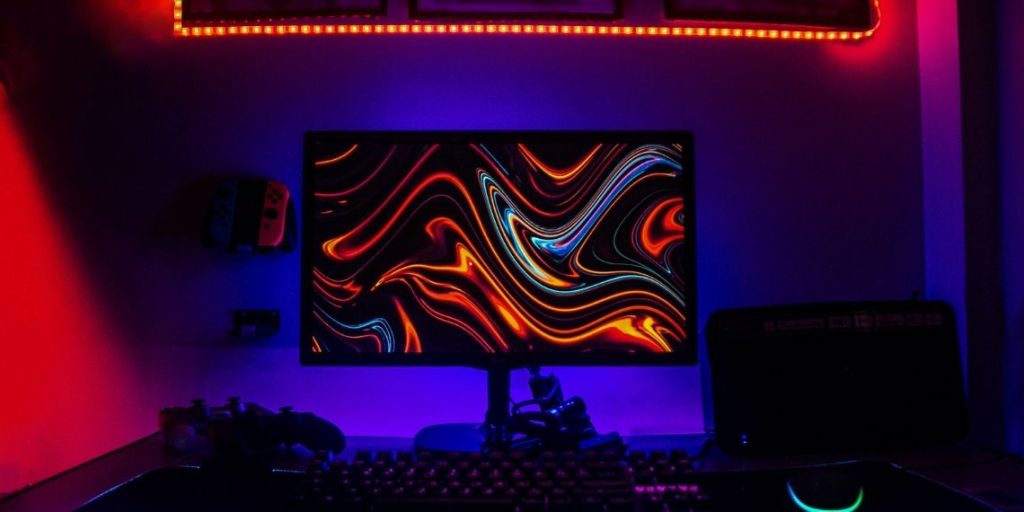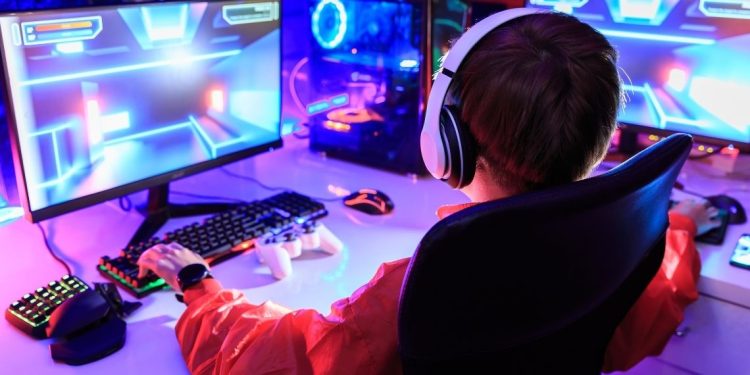Choosing the right gaming monitor size is crucial for an optimal gaming experience. The size of your monitor can significantly impact your immersion, comfort, and performance. With a plethora of options available, it can be challenging to decide which size is best for you. Several factors determine the perfect monitor size. These include desk space, viewing distance, and the types of games you play.
Technological advancements have introduced various features like higher refresh rates, better resolutions, and curved screens. These advancements add to the complexity of making the right choice. In this article, we’ll explore the most common monitor sizes for gaming. We’ll look at their advantages and disadvantages. We’ll also help you determine the ideal size based on your gaming preferences and setup.
Whether you’re a competitive gamer looking for the slightest edge, you need the correct monitor size. If you are a casual player wanting a more immersive experience, choosing the right monitor size is crucial. It maximizes your gaming enjoyment. Let’s dive into the details and discover which monitor size might be the best fit for your needs.

Table of Contents
Factors to Consider
Gaming Monitor Setup and Desk Space
Your gaming monitor setup size and available desk space are crucial. They significantly influence the right monitor size. Before purchasing a monitor, measure your desk to ensure it can accommodate the monitor comfortably. A larger gaming monitor may provide a more immersive experience. However, it might not be practical if it doesn’t fit your desk.
Resolution and Pixel Density
Monitor size should also be considered in conjunction with resolution and pixel density. Higher resolutions, such as 1440p or 4K, are ideal for larger monitors. They offer more detailed and sharper images. For smaller monitors, 1080p is often sufficient. A larger screen with a lower resolution may result in a pixelated display, affecting your gaming experience.
Monitor Sizes and Their Benefits
24-Inch Monitors
Pros:
- Ideal for competitive gaming due to lower eye movement.
- Suitable for smaller desks and setups.
- Typically more affordable.
Cons:
- Less immersive compared to larger monitors.
- Limited screen real estate for multitasking.
A 24-inch monitor is a popular choice for competitive gamers who prioritize fast response times and minimal eye movement. It’s also a great option for those with limited desk space or a tight budget.
27-Inch Monitors
Pros:
- Offers a balance between screen size and desk space.
- Enhanced immersion with larger screen real estate.
- Supports higher resolutions (1440p or 4K) effectively.
Cons:
- May be too large for smaller desks.
- Higher cost compared to 24-inch monitors.
A 27-inch monitor strikes a good balance between size and practicality. It provides an immersive gaming experience without overwhelming your desk space. The increased screen real estate also allows for better multitasking and higher resolution support.
32-Inch Monitors and Larger

Pros:
- Highly immersive gaming experience with a large display.
- Excellent for multi-monitor setups.
- Suitable for 4K resolutions, offering stunning visuals.
Cons:
- Requires significant desk space.
- Higher cost and potential for increased input lag.
Monitors in the 32-inch range or larger are ideal for gamers seeking the most immersive experience. These monitors are perfect for open-world and role-playing games, where detailed visuals enhance the gaming experience. However, they require ample desk space and a higher budget.
Curved vs. Flat Monitors
Curved Monitors:
Enhanced immersion by reducing distortion and providing a wider field of view.
Better for large monitors (32 inches and above).
Flat Monitors:
- Typically more affordable.
- Suitable for smaller sizes and competitive gaming.
Curved monitors can add an extra layer of immersion, especially in larger sizes. However, flat monitors are perfectly adequate for smaller screens and competitive gaming scenarios.
Conclusion
Choosing the right gaming monitor size depends on your specific needs, desk space, and budget. A 24-inch monitor is great for competitive gaming and smaller setups. A 27-inch monitor offers a balanced experience with better immersion. For those seeking the ultimate gaming experience, a 32-inch monitor or larger can provide stunning visuals and enhanced immersion. Best Call of Duty Games
Remember to consider resolution and pixel density to ensure the best image quality for your chosen monitor size. Whatever your preference, the right monitor can significantly enhance your gaming experience and take your gameplay to the next level. I hope this detailed article helps you make an informed decision about your gaming monitor size. If you have any further questions or need more information, feel free to ask!














